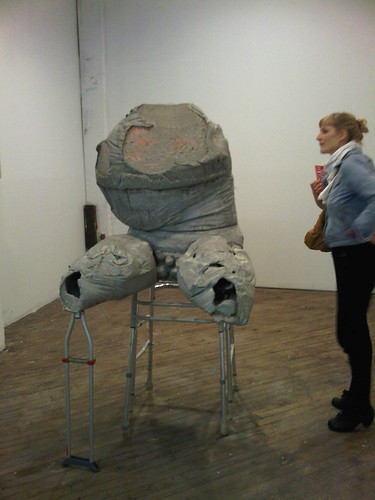
Life? It’s a little crazy right now. But I had to make time for First Friday, especially after missing out on September. I concentrated around Chinatown, stopping first at Jolie Laide Gallery, which I had wanted to visit since it opened over the summer. The location is slightly hidden in an isolated pocket of North Juniper Street, which is fenced in by the new convention center extension to the south and Vine Street to the North. Their current show features three artists: Mike Andrews, Easton Miller, and Andrew Holmquist. Taken as a whole, I was most interested in the varying textures that each of them created. Miller’s collages of repurposed items, such as woven strips of basketball, rabbit’s foot key chains, pieces of shag carpeting, and plaid paper, are like rebuses to unlock some dramatic narrative. The droopy clumps of yarn in Andrew’s tapestries hang as though they are melting off the weft, somehow calling to mind Mike Kelley’s stitched-together stuffed animals. Holmquist’s semi-transparent layers of paint make for an illusion of physical depth.
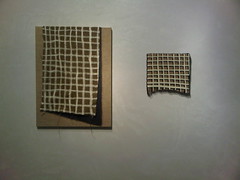
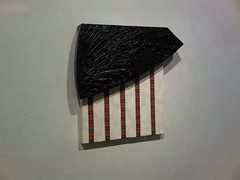

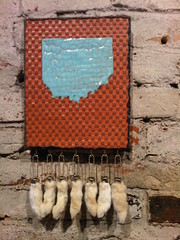
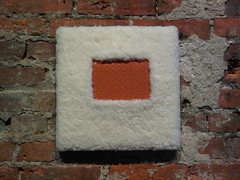
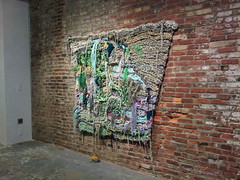
![Mike Andrews - Grey Peak, Then Fall [detail]](http://farm5.static.flickr.com/4146/5045277685_a667aacc21_m.jpg)


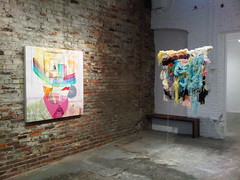
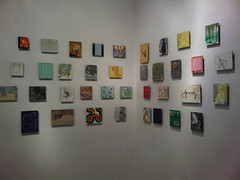
Marginal Utility had a show of Justin Matherly, featuring the mouthful of a title Would that You were the last of the filth which You had to remove / why does your flesh shit? The most striking work is his degenerated reimagining of the Vatican Museum’s Belvedere Torso, a Classical marble sculpture that served as a font of inspiration for numerous High Renaissance artists. The cement Matherly used for the piece looks like liquefied clay poured into bulging plastic trash bags, which were then left to harden in the sun. Whereas the Belvedere Torso is effortlessly vigorous and virile, Matherly offers a leaden, crippled, and impotent sub-human being. Is it a critique of Classicism’s legacy in figurative art? I do not know, and would perhaps rather it remain ambiguous. But I say all this as an admirer of the work. I did ask Matherly about his technique for making the prints that were also part of the show. He divides the image into sections that are inkjet printed on the glossy side of a transparency, which he then transfers while wet on to the paper surface. The result is a fuzzy and off-register composition that resembles the degradation of an image when it has been re-photographed multiple times.
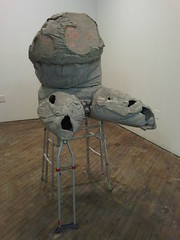
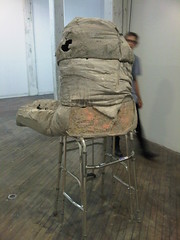
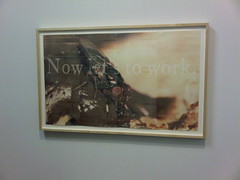

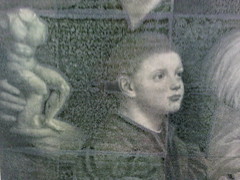
At Grizzly Grizzly, Christopher Carroll’s The Pilot’s Dilemma pitted man against nature in several short videos. There is a brief loop played in forward and then reverse of a Canada Goose flopping back and forth over a decoy: is it balletic or bellicose? Boston’s Prudential Tower stands in the background, letting us know that we are not in the wild. In a video diptych, a man in waders ventures with trepidation into an arched tunnel, lighting a flare that briefly illuminates the dark interior, but that quickly burns out. Another pair of videos show deer being hit by bullets; the footage is grainy and slowed down, a Zapruder film of hunting, allowing the blood spray and shockwaves that ripple the animals’ flesh to be visible.
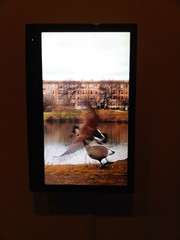
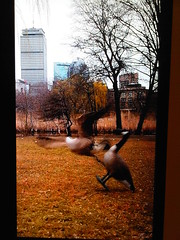
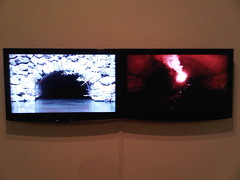
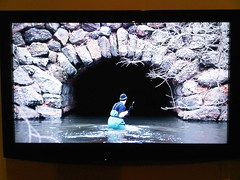
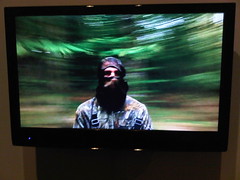
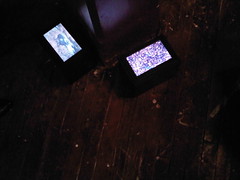
Vox Populi was showing four artists. The first you encounter is Kate Stewart’s Götterdämmerung, where plants and sod have been installed in the gallery. The cold, raking light sets an eerie tone. You feel like an unwelcome interloper in the room, as though this is a snapshot of a post-human dimension. Next, there is Kara Crombie’s animated film Mother’s Birthday, a silly, mixed-up anachronism of life on a southern plantation during the Civil War. Think of a nothing-sacred, animated sitcom variation on Gone With The Wind: the lady of the house takes a female slave as lesbian consort; tragicomic mishaps and gags ensue. Leah Bailis’ Magical Thinking is also cinematic in its vision, embellished with sparkling tesserae of a disco ball and a tapestry of sequins. In the back, there is Bill Thelen’s Connect Up To Me. Have you ever said to yourself, I would love to see that notorious paparazzi photo of Frédéric Prinz von Anhalt, naked and tied to his steering wheel, but blown-up on a sandwich board, and contextualized by some other stuff? Well, here you go.
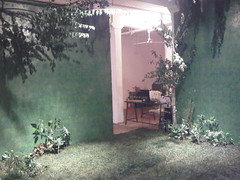

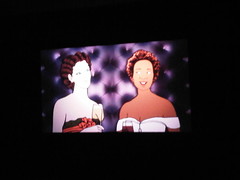
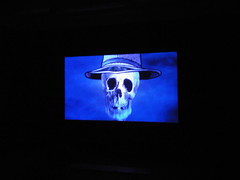

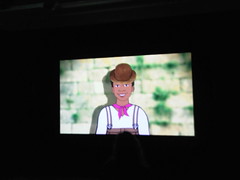

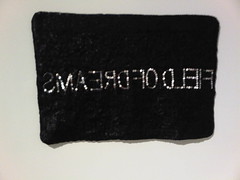



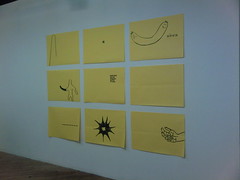
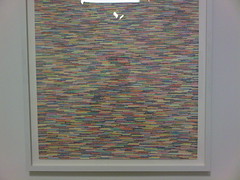
Upstairs at Tiger Strikes Asteroid, I found queasy intrigue in Matthew Sepielli’s paintings of built-up impasto embedded with found object. They are glazed to an almost sticky, sickeningly-sweet finish.

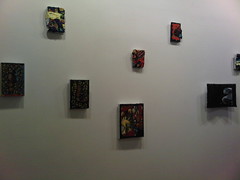
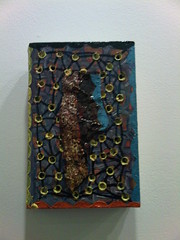

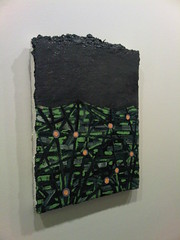
Space 1026’s exhibition featured photography shot on old-school cameras with 35mm film (imagine that!). Sandy Kim’s style is more spontaneous, like the slice of grungy life work by Larry Clark or Nan Goldin, where the artist’s real-life friends, acquaintances, hook-ups, drug-buddies, or whomever else, become the cast of characters. Logan White’s photographs are more elaborately staged, but still feel like they are coated in a layer of bohemian grime.
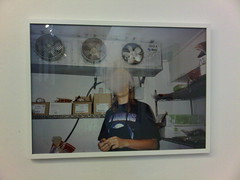

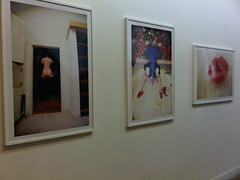

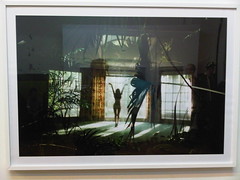
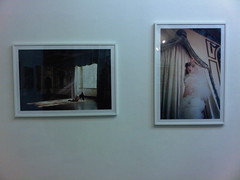
My night ended on a low-note with a visit to the Fabric Workshop and Museum for Joan Jonas’ Reading Dante III. When I walked into the gallery, I had an immediate sense of déjà vu. I was nagged for a while by the sense that I had seen this before; then I remembered William Kentridge’s 7 Fragments for Georges Melies at MoMA this spring.
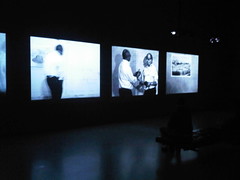
Alright, they are not the same thing, but they feel remarkably similar. I went into this knowing nothing about Jonas. If sources are to be believed, she is an influential but somewhat unsung pioneer of video art. However, I saw nothing in content or presentation of Reading Dante III that felt fresh, original, or demanding of my attention. It is hard to believe that brain behind FWM, who last year, in a very forward-thinking mode decided to partially-fund and exhibit Ryan Trecartin’s most recent film trilogy, is the same person who decided it would be good to reach backward for Jonas. Hold up the twitchy, youthful energy of Trecartin’s films next to Jonas, and she seems not mature, but rather geriatric. Also, it appears that the whole show has been lifted and reinstalled wholesale from the 2009 Venice Biennale (even then subsequently shown in identical form at her gallery Yvon Lambert), an unpardonable act of laziness. Why does an organization with a stated mission of collaborating with artists on new work that pushes the boundaries of materials and media resort to being a showcase for New York gallery hand-me-downs? I know the answer, but will let you draw your own conclusions.
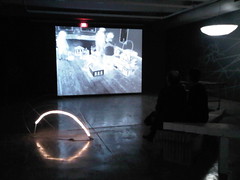

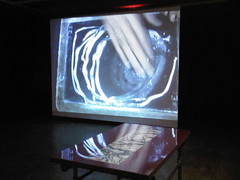
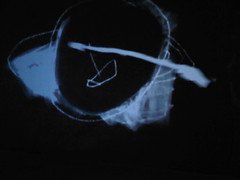
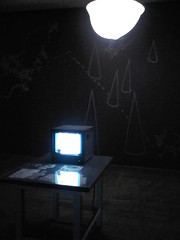
YoBit lets you to claim FREE COINS from over 100 distinct crypto-currencies, you complete a captcha one time and claim as much as coins you want from the available offers.
ReplyDeleteAfter you make about 20-30 claims, you complete the captcha and resume claiming.
You can click CLAIM as many times as 50 times per one captcha.
The coins will stored in your account, and you can exchange them to Bitcoins or USD.